To maintain constant pressure, people buy a hydraulic accumulator. This is a special container with a membrane. He accumulates water inside himself, and then at a certain point in time distributes it. Now you can adjust the pressure yourself, which saves money.
Influence of pressure in the accumulator
This device works as follows: when the pump is activated, water begins to pass from the rubber membrane into the stretching container. The gas is compressed and, as a consequence, the pressure increases. The pressure moves the liquid into the distribution pipes. After the device reaches the set value, it will automatically turn off.
Water is taken from the accumulator stock. If the volume of the liquid drops significantly, this leads to a decrease in pressure. As soon as this starts to happen, the pump starts working again. The entire operation of the accumulator is controlled by a pressure switch.
The main function is to create the necessary conditions for the successful operation of the pump. But this setup can solve other problems as well:
- prevention of sudden changes in pressure in the pipe, which gradually damage it;
- increases the life of pipes and pump;
- creates a reserve supply of water in case of a sudden power outage in the house.
When choosing such an installation, first of all, you should pay attention to the power and type, and from these indicators you should choose the volume of the tank. For example, a surface pump with a capacity of up to 1 kW requires a storage tank with a volume of 24-50 liters. But a submersible pump with a capacity of 1 kW requires a 60-100 liter hydroaccumulator.
Types of accumulators
- small - up to 50 liters;
- medium - 50-100 liters;
- large - more than 100 liters.
It is better to install small devices if the pump capacity in the well does not exceed 2m³ / hour. Medium is ideal for a capacity of 3.5m³ / hour, and large for pumps with a capacity of 5 cubic meters. By design, this device is divided into only two types:
- for hot water;
- for cold water.
Accordingly, the first type is always colored red, and the second blue or light blue. In addition, tanks are often distinguished by the material from which the membrane is made. So, the drinking water tank is made of safe rubber. The last criterion is the design of the accumulators:
- vertical;
- horizontal.
The first type is installed if there is little space in the room. In other cases, horizontal accumulators are used complete with an external pump.
Optimal performance
In general, most of the indicators in the accumulator depend on the correct setting of the air pressure level, the minimum and maximum pressure at which the pump activation or deactivation system will turn on.
If you decide to independently check the performance of such a device, then try to follow the recommendations.
Firstly, the air pressure in the tank must be less than the minimum defect in turning on the device. Typically, the difference in indicators should vary within 10%. If this condition is met, then a certain volume of water will always remain in the tank before the pump turns on again.For example, if the pump is activated at 2 bar, then the air pressure should be 1.8 bar. Since: 2 bar / 100% * 10% = 0.2 bar. 2 bar - 0.2 bar = 1.8 bar.
Secondly, the air pressure in the storage tank will never depend on its volume. For example, on average 1.6 bar is enough for a capacity up to 150 liters, and 2 bar is enough for a capacity up to 600 liters. If the accumulator is installed in a one-story building, then its pressure can be reduced to 1 atmosphere, provided that not much water is consumed. If you do this, then the wear of the water system will be greatly reduced. True, you will have to limit yourself to the use of plumbing devices.
If you lower the pressure below one, then the rubber bulb will stretch a lot, and it will have to be changed soon. It is also undesirable to increase the pressure above 2-3 bar. Since this air pressure will take up most of the tank, and this will reduce water consumption. In addition, the load on the pipes will increase, which can lead to their rapid wear.
Verification methods
The number of checks is indicated for each model separately. You can find this information in the instructions or the product passport. Usually 2-3 checks of the accumulator per year are sufficient.
Before starting the test procedure, it is imperative to drain all the water from the tank. The pump is then disconnected from the power supply. Then:
- Unscrew the decorative cap that covers the nipple, it is located at the top of the product body.
- Next, connect the pressure gauge to the spool.
- The instructions for the accumulator must indicate the factory parameters, it is necessary to compare them with the indicators of the pressure gauge.
- If the level is lower than indicated in the instructions, then it is necessary to pump air using a compressor. And if higher, then bleed the air.
- After that, you need to wait about 24 hours, if the pressure level in the accumulator is normal, then you can put the device back together and continue to use it for its intended purpose.
If the pump began to turn off and on often, then this is a direct reason to conduct an unscheduled check of the accumulator. In general, for any deviations, it is advisable to carry out a similar check of the pressure level.
How to properly adjust the pressure in the accumulator
- pressure at which the pump turns on;
- pressure at which the pump turns off;
- air pressure in the membrane tank.
The first and second indicator regulates the pressure switch. It is better to adjust it several times to reduce the error as much as possible.
In the pressure switch, you need to find two springs that differ in their sizes. They are both secured with nuts. The large one is responsible for activating the pump, and the small one is needed to set and determine the minimum and maximum pressure. They are both connected to a special membrane that makes and breaks the contacts.
To adjust these springs, you need to turn the nuts that secure them with a wrench. If you turn the nut clockwise, then the spring will be compressed more, and this will lead to an increase in the switching threshold of the device. Reverse rotation decreases the level at which the device is triggered. The very adjustment of the entire device is as follows:
- The level of pressure in the tank is checked; if required, it is better to pump it up with a compressor.
- Turn the nuts on the large spring in the required direction.
- Open the tap to reduce the pressure. At a certain moment, the pump will turn on, the pressure that was in this unit of time will be recorded by the pressure gauge. If this value does not suit you, then repeat all over again until you reach the optimal value.
- Now you need to adjust the small spring. It is highly sensitive, so it must be turned a maximum of half a turn.
- The indicator of the small spring is determined with the valves closed and the pump active. The pressure gauge will show the value at which the device turns off. If it is above 2.5-3 atmospheres, then it is recommended to loosen the nut.
- Drain all water and start the appliance.If all indicators are normal, then everything worked out. If not, you will have to re-adjust until it works.
Once again, I repeat, all indicators must be taken in the product passport. Since they usually differ on different models.

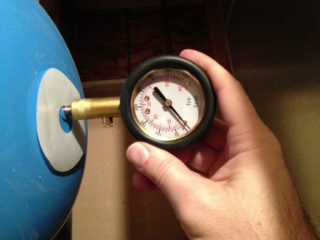
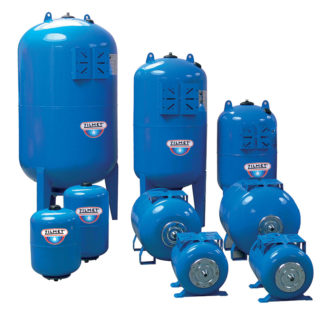
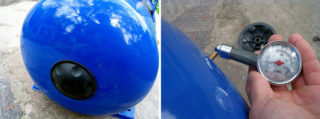
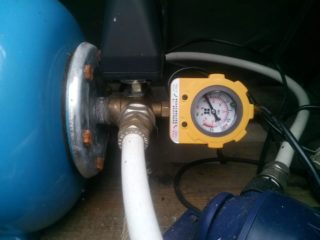







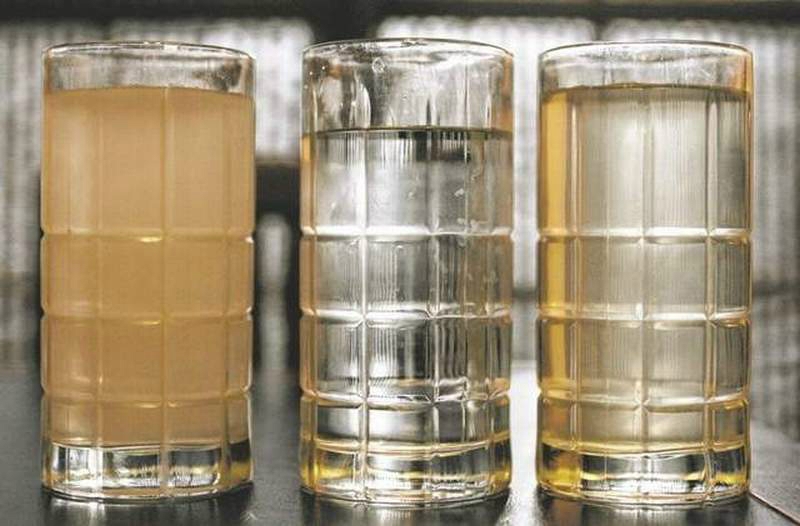
The water supply is weak at the tap. why?
The author's language is at the level of a C-student both in Russian and in technical terms. A long article full of useless information for the layman. And this is for a simple answer to one question. One-tenth below the threshold for switching on the pressure switch, and that's it.
Anna, start by checking the dissecting mesh on the crane (if there is one of course (.
For those who have not come across this topic before, it is quite intelligible and to the point
Anna. Most likely, if there is a filter after the accumulator, then it is clogged. Flush it. After turning off the pump. Or maybe turn off the tap before it. If the filter does not have self-cleaning. As a rule, after pumping the HA all dirt comes out of the rubber bulb.